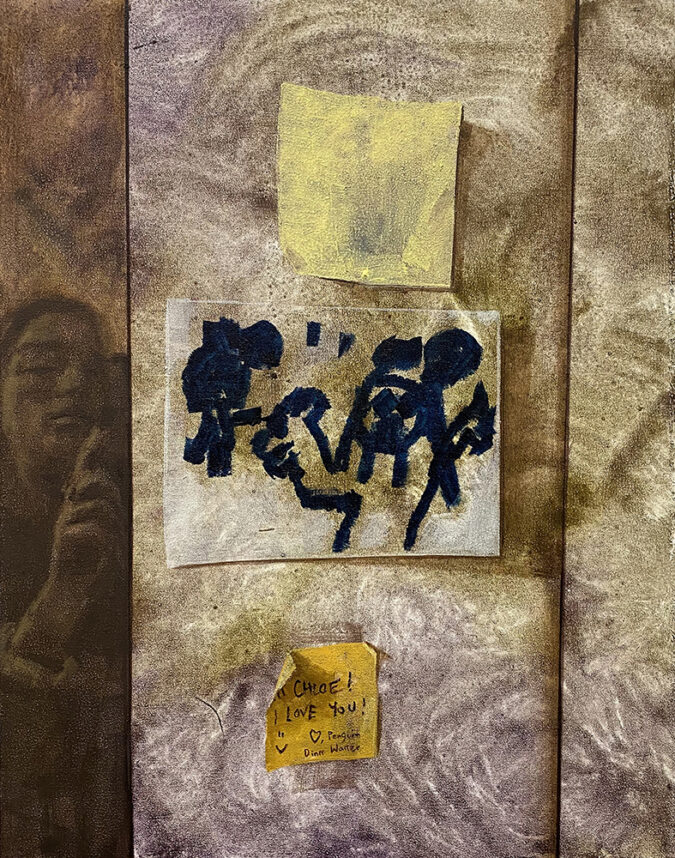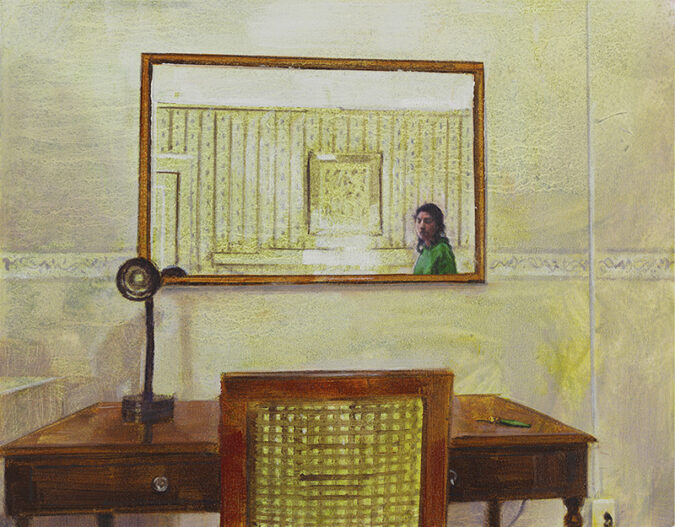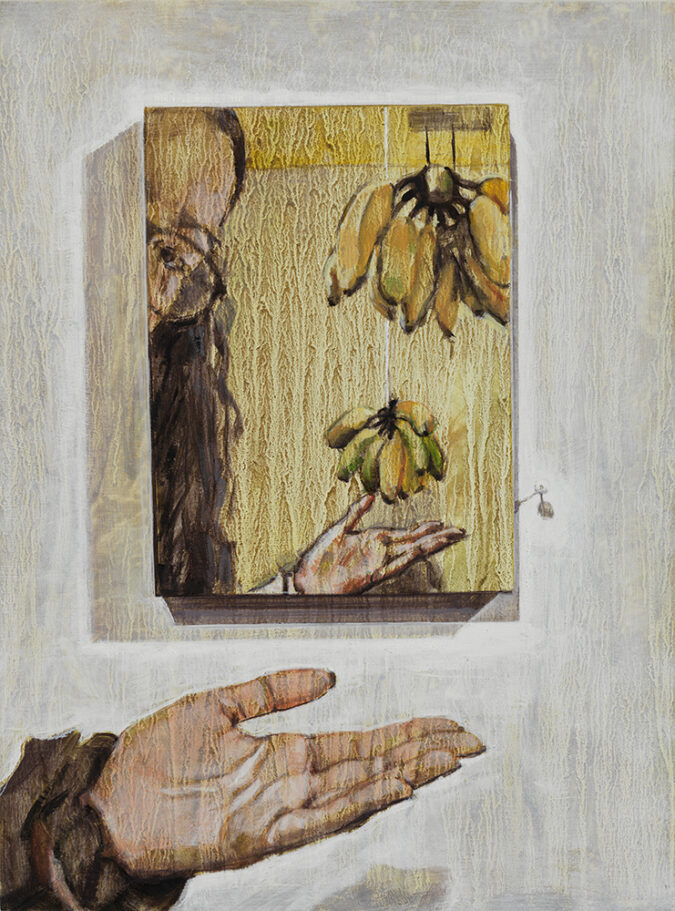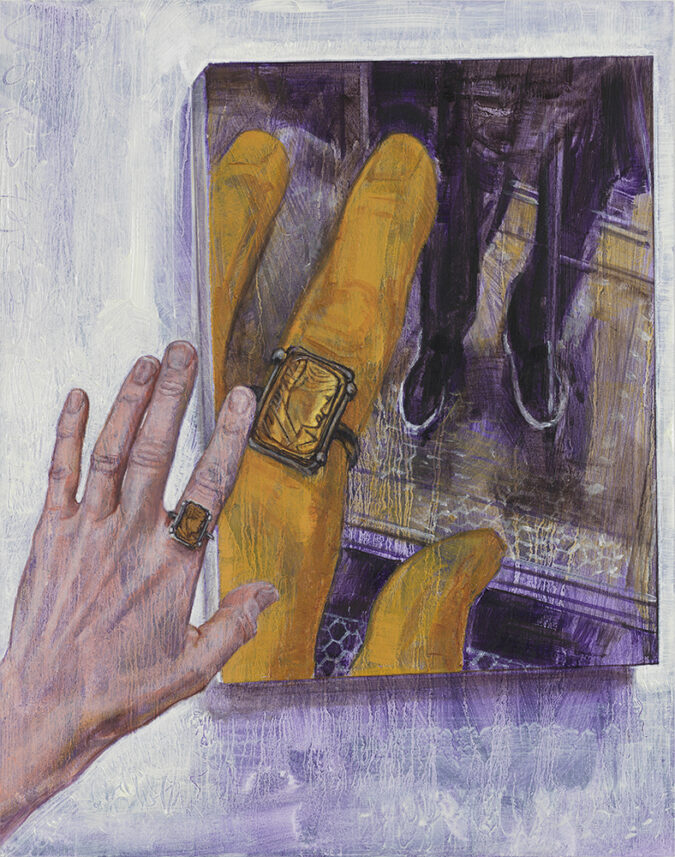Laura Karetzky
Laura Karetzky lives and works in Brooklyn, NY, with a studio in DUMBO through the Two Trees Cultural Space Program. She is primarily a painter but makes sculpture, video installations and collaborative pieces as well. Laura earned her BFA at Carnegie-Mellon, PA, and MFA at the New York Academy of Figurative Art, NYC. She has had residencies at Yaddo, and Mana Contemporary, and recent solo shows at Elizabeth Houston, NYC (Homings 2019) and Lora Schlesinger Gallery, LA (Ratio:Poems 2019). She has had feature interviews and reviews with artcritical, ArtSpiel, ArtNowLA, Anti-Heroin Chic and American Arts Quarterly.
Question:
I vividly remember you talking about the force of your first FaceTime/video chat, and what a revolutionary development it was for you. Your work is painterly, tactile, intimate, and your subject matter is predominantly the closeness of home and family. The screen – iPhone, iPad, laptop – is central as subject, portal, and process. Can you talk to us about that, and how you use touch, materiality and technology to mitigate disembodied experiences, and draw us into intimate and psychological encounters with people and places? Are there examples of other artists using windows into other worlds that have influenced you? (Velazquez in “Las Meninas” and Van Eyck’s “Arnolfini Wedding” come to my mind)
Answer:
Last week I was beginning work on a new painting; it would depict a locked office door covered in Post–It notes. The office door window would reveal my reflection, and the notes were from students to the Head of High School, playfully demanding things like snow days. The scene was from March 2020, in the early days of the coronavirus lockdown when the school had been shuttered. I found myself studying this image, on Jan 6, 2021 at 1pm, while half listening to a livestream of congress debating the electoral college vote certification, and just as the insurgent breach erupted in the capitol.
Suddenly, I was transported right into the drama. Never mind that the protest Post-It notes I was considering were juvenile and in jest, I was drafting a locked office door, breaching this door with my gaze, with the assault of my marks on its surface, and then re-fortifying it with a buildup of paint. The idea of protest in the image took on darker tones and a naïve drawing suddenly looked fiery. My face was reflected in the darkened office door window.
In my work, the window has a deliberate function, both literal and conceptual. It references my ongoing concern with the virtual window, the entryway through which we engage and conduct our daily lives, and through which we see ourselves. In this case the reflection, inherent in the windowpane, assumes a cameo role (similar to Velazquez, Van Eyck, Hitchcock)—a nod to the artifice of the thing. Correspondingly, embedded in the computer screen, over video chat, there’s an awareness of our present situation: Here I am, in the middle of the pandemic, watching myself onscreen as a stranger, and I’m looking into my own time capsule.
I have found a very surprising, tender intimacy over Zoom. Viewing colleagues in their kitchens, cats walking across their work, children passing through casually; friends un–coiffed, in pjs, folding laundry, closing up garbage bags; in many ways we are seeing more of each other, more candid parts, a more bona fide glimpse into the human experience. At the same time as we are being held by a machine at arms-length, we are being seduced into a casual, stripped down, informal, closer, more connected liaison. And we are occupying the same screen.
The experience of merging with those who are on the other side of the interface, embedding ourselves in others’ lives, is as vast a field of fodder as I could imagine. I’ve recently thought a lot about how this idea emerged even before we had computer screens. Michelangelo Pistoletto’s “mirror paintings” (1962 on), combine the real and the virtual by registering the viewers own image alongside static painted figures. The result is three distinct realities: the constructed ‘between” space of the polished stainless–steel display, the real space we are inhabiting, and the virtual space of the reflection in the mirror. We are left adeptly juggling three simultaneous perspectives.
I’ve also been thinking about Marcel Duchamp’s Large Glass, aka The Bride Stripped Bare By Her Bachelors, Even, 1915 -1923. The light in the gallery allows us to see ourself in the glass and see beyond the glass to see somebody through it. We can see each other at the same time as we are looking at the work. Furthermore, the accidentally shattered glass predicts a cracked smartphone screen. This, once strange unusual piece, suddenly feels so familiar.
I am constantly thinking about what I am seeing, but I’m also thinking about whose viewpoint I am seeing it from. As video transmissions are becoming an integral part of our existence, we are aptly normalizing the concept of multiple, parallel realities, and such artistic notions are no longer absurd. And so, I am asking my paintings to accommodate several readings, because perspective is being reconsidered.









